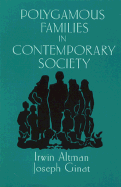Book contents
- Frontmatter
- Contents
- Foreword
- Preface and acknowledgments
- 1 Introduction
- Historical background
- Early stages of relationships
- Home environments of plural families
- 10 Living arrangements
- 11 Wives and homes
- 12 Husbands and homes
- Managing everyday life
- Social-emotional and family relationships
- Appendix A Methodology and procedure
- Appendix B Demographics of Mormon polygyny
- Notes
- References
- Index
11 - Wives and homes
Published online by Cambridge University Press: 05 May 2010
- Frontmatter
- Contents
- Foreword
- Preface and acknowledgments
- 1 Introduction
- Historical background
- Early stages of relationships
- Home environments of plural families
- 10 Living arrangements
- 11 Wives and homes
- 12 Husbands and homes
- Managing everyday life
- Social-emotional and family relationships
- Appendix A Methodology and procedure
- Appendix B Demographics of Mormon polygyny
- Notes
- References
- Index
Summary
A home is more than a place to eat, sleep, store personal things, and engage in the practical affairs of day-to-day life. A home is also where a marriage relationship is played out, children are cared for and taught, and people reveal, through their decorations and lifestyle, who they are and what they believe in. Thus a home is a place in which people display their values, idiosyncrasies, and personalities. In Western societies a home is also a person's or family's “castle” – a place over which they have dominion and control. The home is also ideally a place where people can have solitude, security, peace, and serenity or where they can interact with family, friends, and neighbors, as they desire.
The present chapter analyzes these psychological and social aspects of homes for wives in polygynous families. Specifically, it is concerned with wives' feelings about their homes, their home decor, and the extent to which homes reflect their individuality, dyadic relationships with their husband, and links to their co-wives and the communal plural family. Another topic of interest is the extent to which wives control and manage homes as personal “territories” and also use them to achieve solitude. The overall intent is to determine the degree and nature of “place attachment” to homes among wives in present-day plural families. Chapter 12 addresses the same issues for husbands in Mormon fundamentalist families.
- Type
- Chapter
- Information
- Polygamous Families in Contemporary Society , pp. 213 - 250Publisher: Cambridge University PressPrint publication year: 1996

